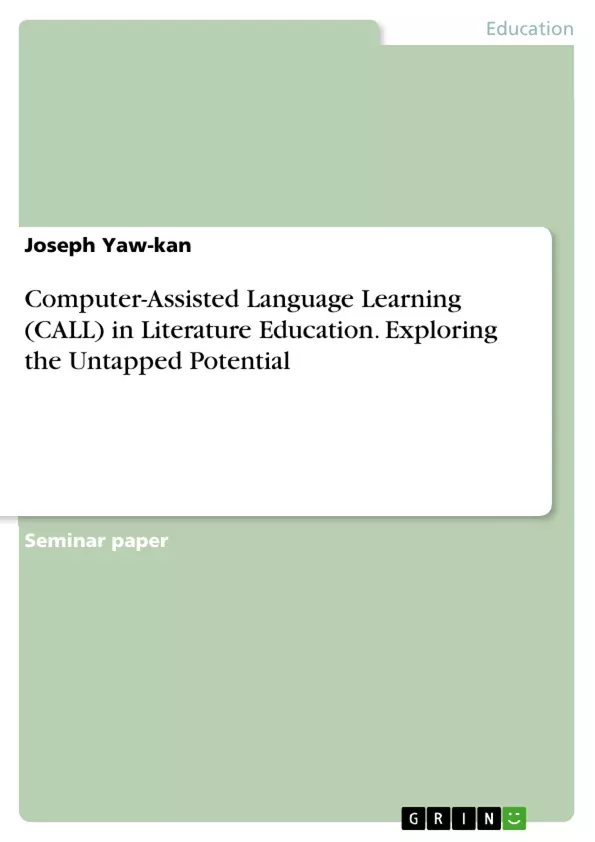This paper delves into the underexplored intersection of Computer-Assisted Language Learning (CALL) and literature education, focusing on the innovative application of CALL in teaching characterization. While CALL has been widely acknowledged for its contributions to language education, its relevance to literature teaching remains a subject of debate. Drawing on the conceptualization of innovation by Rogers (2003), we examine how CALL serves as a bridge between technology and the literature classroom. Through a literature review, we explore the existing landscape of CALL studies, emphasizing the gap in literature teaching. The paper then presents an analysis of quiz results, highlighting the effectiveness of CALL in teaching characterization. The findings underscore the potential of CALL in literature education, offering insights for educators and researchers alike.
Inhaltsverzeichnis (Table of Contents)
- INTRODUCTION
- LITERATURE REVIEW
- METHODOLOGY
- TEST RESULTS
- DISCUSSION OF FINDINGS
- CONCLUSION AND RECOMMENDATION
- REFERENCES
- APPENDICE
Zielsetzung und Themenschwerpunkte (Objectives and Key Themes)
This paper explores the integration of Computer-Assisted Language Learning (CALL) into the teaching of literature, specifically in the area of characterization. The author aims to demonstrate the effectiveness of CALL in enhancing learners' listening and critical thinking skills while highlighting the potential of CALL to improve success rates in literature teaching compared to traditional methods.
- The impact of CALL on literature teaching
- The role of CALL in developing learners' listening and critical thinking skills
- The effectiveness of CALL compared to traditional teaching methods
- The application of CALL to teaching characterization in literature
- The potential of CALL as an innovative pedagogical development in language education
Zusammenfassung der Kapitel (Chapter Summaries)
- INTRODUCTION: This chapter introduces the topic of the paper, focusing on the growing role of CALL in pedagogy. It highlights the potential of CALL to foster creativity in the classroom and discusses its increasing adoption in 21st-century language education. The chapter also provides context for the study by referencing existing research on CALL's impact on language teaching.
- LITERATURE REVIEW: This chapter reviews relevant research on CALL and its effectiveness in enhancing language learning. The review examines various studies that investigated the benefits of CALL in areas such as reading comprehension, listening skills, and strategy instruction. It highlights the positive findings of these studies and provides a foundation for the study's exploration of CALL's application to literature teaching.
- METHODOLOGY: This chapter outlines the methodology employed in the study, detailing the data collection and analysis techniques used. It describes the two classroom activities conducted, the student population, and the sampling method used to select participants for data analysis.
Schlüsselwörter (Keywords)
The paper focuses on key concepts such as Computer-Assisted Language Learning (CALL), creativity, critical thinking skills, innovation, and the impact of technology on the teaching of literature, particularly characterization. It explores the potential of CALL to enhance learners' skills and contribute to effective pedagogical practices in the classroom.
- Quote paper
- Joseph Yaw-kan (Author), 2023, Computer-Assisted Language Learning (CALL) in Literature Education. Exploring the Untapped Potential, Munich, GRIN Verlag, https://www.hausarbeiten.de/document/1418353


